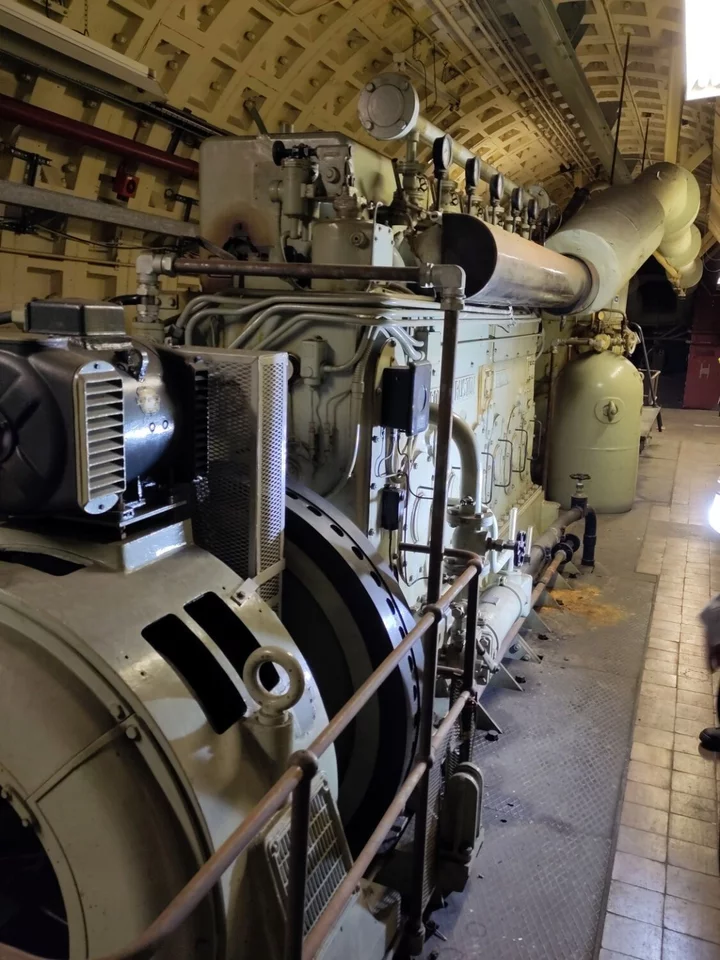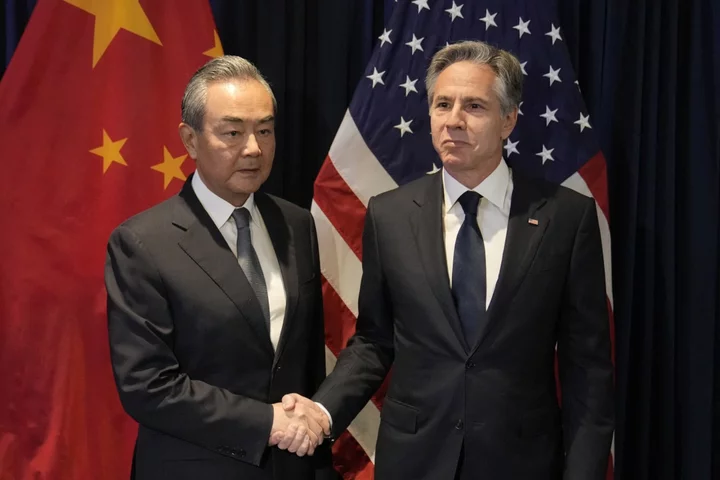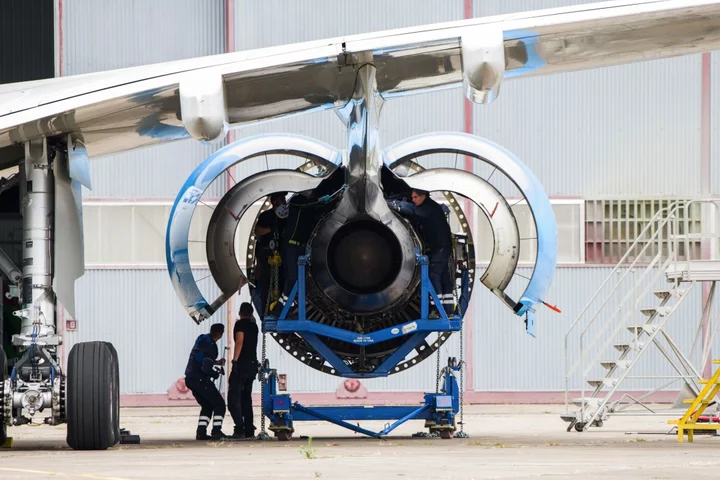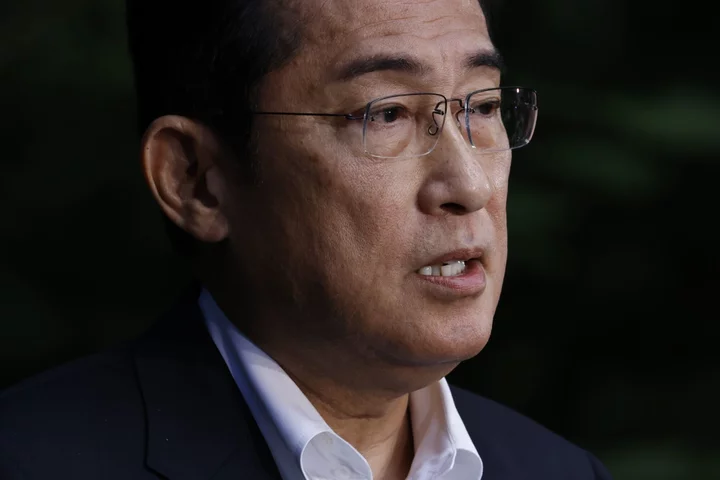A warren of tunnels beneath central London, once used by the spies who inspired the creation of James Bond, has been bought by a fund manager with a £220 million ($269 million) plan to turn them into a tourist attraction “as iconic as the London Eye.”
Australian-born Angus Murray, a former executive at asset manager Macquarie Group Ltd., has signed a deal to buy the tunnels from Britain’s former state telecom monopoly, BT Group Plc, and has a four-year makeover strategy for the site. The Kingsway Telephone Exchange, as it is officially known, occupies 8,000 square meters (86,111 square feet), 40 meters below the lawyers’ offices that characterize London’s Holborn district.
Through his company, the London Tunnels Ltd., Murray plans to line cavernous, cylindrical rooms with gigantic screens to create immersive, blockbuster-inspired experiences. He hopes to strike deals with such Hollywood studios as Harry Potter-series maker Warner Bros. Discovery and Amazon.com Inc., which now owns the rights to James Bond.
At the same time, he wants to preserve parts of its history, such as what he says was the UK’s deepest bar, which was frequented by the engineers and clerks who worked underground. Later, they made sure the first trans-Atlantic telecommunications line kept running in order to carry diplomatic emergency calls during the Cold War.
“Would I compare this to be as iconic as the London Eye? Yes, I would,” Murray says during a tour of the tunnels in August. “Who wouldn’t come here?”
The History
The tunnels were built in 1941 and 1942 to be used as deep shelters from air raids during the London Blitz. They were completed after the worst of the bombing was over, so they were never used for that purpose, according to historians at BT. By 1944, they were being used by the dull-sounding Inter-Services Research Bureau.
The ISRB was, in fact, a cover name for the Special Operations Executive (SOE), an espionage organization that is sometimes called “Churchill’s Secret Army.” It operated across war-torn Europe and eventually became part of MI6, the UK’s foreign intelligence service.
James Bond creator Ian Fleming was a liaison officer to the SOE, which under the ISRB code name developed eccentric weapons and booby traps similar to those offered by “Q Branch” in the Bond books and films. They would stuff rat skins with explosives, for example, and build dummy logs that hid munitions, according to the Natural History Museum, which housed one of the group’s top-secret workshops. The UK Foreign Office, which is responsible for MI6, didn’t respond to a request for comment.
SOE equipment was removed from the tunnels on VE Day in 1945, BT says. The tunnels were used as a secure “reserve war room,” to store 400 tons of highly sensitive documents. They later hosted the secure hotline that connected the presidents of the US and Soviet Union during the Cold War.
Ownership was eventually transferred to the General Post Office, which became BT, Britain’s state-operated phone company. BT was privatized by Prime Minister Margaret Thatcher in 1984, and the tunnels were deemed obsolete by the ’90s.
The Deal
BT put the tunnels up for sale about 15 years ago. To buy them, Murray put in roughly £12 million of his own money, plus financing from his private equity firm, which runs under the brand of his fund, Castlestone Management LLC.
An initial phase to bring the site “up to construction” will cost about £40 million and will take until the end of next year. Murray says he’s secured commitments from investors for that work. The tunnels will then need fitting out with modern amenities and a shell that meets health and safety approvals. This will cost a further £100 million. He has hired Wilkinson Eyre Ltd., the architects who worked on the recent £9 billion revamp of London’s Battersea Power Station.
Murray estimates that a further £80 million will be needed to get the space ready for the public by 2027. As well as seeking partnership with such entertainment companies as Walt Disney Co., Murray plans partnerships with manufacturers such as Samsung Electronics Co. or LG Corp. He says he’s already started those conversations. The tunnels have room for eight times as many screens as the famous advertising display that dominates London’s Piccadilly Circus junction, he says.
Immersive experiences and screen-based attractions like Las Vegas’s new Sphere have become more popular as technology has improved. However, the lack of natural light and ways to orient oneself might be a problem, according to Catherine Allen, founder of research organization and consultancy Limina Immersive, which specializes in in the responsible use of immersive technology.
“In 2015, I queued for an immersive art exhibition in London, but the headsets smelt awful and the content made me and my colleagues dizzy,” she said. “At a separate immersive experience in the north of England in the mid-2010s, I witnessed a man have a panic attack while on one of the rides.”
The Man
This is a passion project for Murray, a larger-than-life character with a background that’s mainly in finance rather than tourism or entertainment.
In 2011, his fund Castlestone faced a raid by British regulators in the wake of the 2008 financial crash. Murray shut Castlestone’s British and Irish operations shortly after that probe; he says they had become uneconomical.
The business was already eroding due to the shift from active asset management to index investing, Murray says. The news stories prompted client concern, but he ultimately faced no disciplinary or regulatory action, according to the Financial Conduct Authority’s site. He still operates Castlestone in the US.
While he’s wearing a hard hat, Murray remains very much the banker when reeling off details of the business plan. He estimates the tunnels’ safe capacity at 2 million visitors a year, or 625 per hour. With an entry price around £30, that amounts to £60 million in annual revenue. He projects margins for earnings before interest and tax at a precise 38%. If the fully up-and-running project were valued with a multiple similar to that of the buyout of British theme-park operator Merlin Entertainments, that would make it worth about £270 million.
The Odds
That’s a lot of ifs. The biggest immediate threat to Murray’s dream is probably Britain’s planning system.
He’s in consultation with Camden and the City of London’s councils. He says they should appreciate the benefits of a new attraction that could draw investment to a part of London that, while nestled among such tourist spots as the British Museum and Saint Paul’s Cathedral, has few attractions itself.
Development decisions in the UK are in the hands of local councils. Residents are invited to share their views before voting on applications takes place, a process that can choke ambitious commercial projects.
More than one in 10 applications for commercial developments failed to secure permission in the year ending March 2023, according to government statistics. The building of a new Disney-style theme park near London—which at one point had the backing of Hollywood studio Paramount Global—was stymied after the discovery of a rare spider whose habitat was deemed to be at risk. This year, the developer behind that proposal went into administration.
The People’s Republic of China also suffered a recent defeat in this system. Its plan for a new embassy near the Tower of London was unanimously rejected by Tower Hamlets Council in December, following dozens of complaints from residents worried about safety as well as eager to maintain the site’s heritage. While applicants can appeal to an independent reviewer, it’s an expensive process that can take many weeks to conclude.
Beijing found it strange that local officials could block such a move—seeing it as a matter for the national government rather than regional planners—but decided not to appeal the decision.
To see the tunnels in their current state, visitors have to find a discreet entrance in an alleyway and then don a hard hat, high-visibility clothing and steel-toe-cap boots. Then they descend into a warren of parallel tunnels that total a mile in length, with smaller side branches.
In some areas, rotary telephones sit beside hulking, British-built diesel generators and other long-defunct machinery. Other areas have decades-old wallpaper and furniture. Much of the space is completely bare, apart from occasional bits of graffiti from bold urban explorers.
A couple of asbestos warnings are posted. Murray says all dangerous materials will be removed. The London Underground’s Central line rumbles loudly above—a noise he concedes will be impossible to eradicate.
For now, he sees unique value and potential. “Where can you get 8,000 square meters of historic novelty in London,” he asks, “that’s got a billion dollar reconstruction valuation?”









